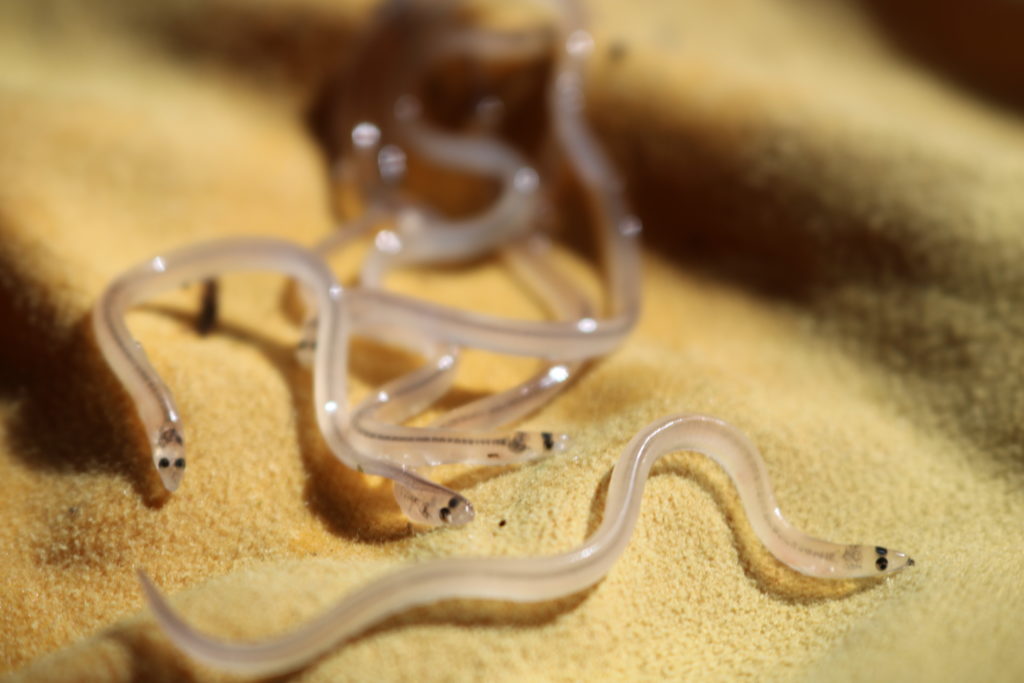Every spring since 2008, volunteers have waded into the Hudson River and its tributaries to count migrating juvenile American eels.

This year, that activity and the data it collects are backed by a formal quality assurance project plan (QAPP).
Such project plans allow researchers and decision-makers to know how data were collected. The organizers of the Hudson River Eel Project hope this QAPP will allow project data to be included in the next American Eel Stock Assessment by the Atlantic States Marine Fisheries Commission.
Among other things, the QAPP specifies how fyke nets and other equipment are to be installed, and the training of volunteers to distinguish the young transparent glass eels from the older, but still juvenile, yellow elvers.

The eel project has grown from sampling at two sites in 2008 to fourteen today. The 2019 eel count is under way, but the 2018 project caught, counted, and released 143,953 eels, the most ever.
The QAPP is a milestone for the eel project and is part of a growing trend in which scientific organizations use data collected by volunteers. The EPA last March published a Handbook for Citizen Science Quality Assurance and Documentation and related materials for citizen science projects.
The eel project is organized by the Hudson River Estuary Program and the Hudson River National Estuarine Research Reserve.
In addition to the QAPP-guided sampling of eels, the project includes extensive public outreach and education, engaging people of all ages with the river and its eel population.
Citizen science and data quality are the focus of a new Commission monitoring workgroup, and were the subject of a 2016 article in the Commission’s print publication.